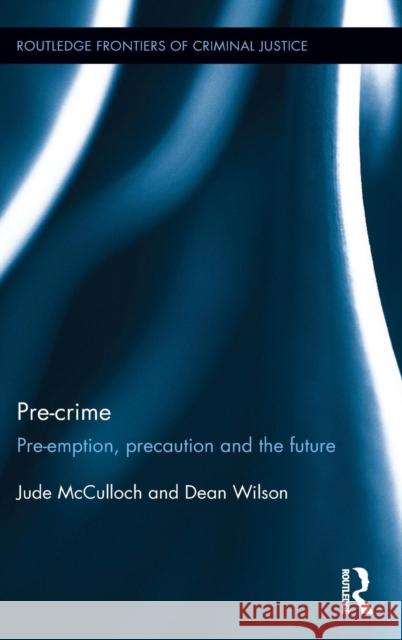Pre-crime: Pre-emption, precaution and the future » książka
Pre-crime: Pre-emption, precaution and the future
ISBN-13: 9781138781696 / Angielski / Twarda / 2015 / 154 str.
Pre-crime: Pre-emption, precaution and the future
ISBN-13: 9781138781696 / Angielski / Twarda / 2015 / 154 str.
(netto: 744,80 VAT: 5%)
Najniższa cena z 30 dni: 730,42
ok. 22 dni roboczych.
Darmowa dostawa!
Pre-crime aims to pre-empt 'would-be-criminals' and predict future crime. Although the term is borrowed from science ction, the drive to predict and pre-empt crime is a present-day reality. This book critically explores this major twenty-first century development in crime and justice. This first in-depth study of pre-crime defines and describes different types of pre-crime and compares it to traditional post-crime and crime risk approaches. It analyses the rationales that underpin pre-crime as a response to threats, particularly terrorism, and shows how it is spreading to other areas. It also underlines the historical continuities that prefigure the emergence of pre-crime, as well as exploring the new technologies and forms of surveillance that claim the ability to predict crime and identify future criminals. Through the use of examples and case studies it provides insights into how pre-crime generates the crimes it purports to counter, providing compelling evidence of the problems that arise when we act as if we know the future and aim to control it through punishing, disrupting or incapacitating those we predict might commit future crimes. Drawing on literature from criminology, law, international relations, security and globalization studies, this book sets out a coherent framework for the continued study of pre-crime and addresses key issues such as terminology, its links to past practises, its likely future trajectories and its impact on security, crime and justice. It is essential reading for academics and students in security studies, criminology, counter-terrorism, surveillance, policing and law, as well as practitioners and professionals in these fields.











